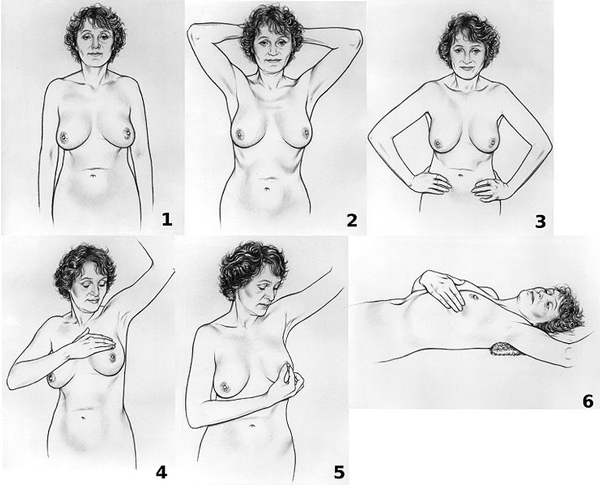Whatever your age, size or shape it’s important to take care of your breasts. Breast cancer is the most common cancer in women, so it’s important to look after your breasts by being breast aware and performing a breast self exam.
A woman can notice changes by being aware of how her breasts normally look and feel and by feeling her breasts for changes (breast awareness), or by choosing to use a step-by-step approach and using a specific schedule to examine her breasts (breast self exam). She can then report any unusual changes to her doctor as soon as she spots them.
Breast awareness is about getting to know your own body so you can spot any breast changes early. Everyone’s breasts look and feel different; for many women it’s normal to have lumpy breasts and/or tenderness or pain around their period. Changes in your breasts may be harmless, but you should get them checked straight away. Things you need to look out for are: any lumps, thickening or bumpy areas; changes in appearance, like puckered or dimpled skin; discomfort or pain; and nipple discharge, a rash, red areas that won’t heal, or a change in your nipple position (pointing differently or pulled in).
Breast self exam (BSE) is an option for women starting in their 20s, it should be performed monthly. If you still have menstrual periods, you should perform the examination a few days after your period has ended, when your breast tissue is least likely to be swollen or tender. If you are not menstruating (such as in menopause), BSE should be performed on the same day each month. Lie down and place your right arm behind your head, use the finger pads of the 3 middle fingers on your left hand to feel for lumps in the right breast. Repeat the exam on your left breast, putting your left arm behind your head and using the finger pads of your right hand to do the exam. While standing in front of a mirror repeat the palpation process, then with your hands pressing firmly down on your hips look at your breasts for any changes and repeat in several positions; such as having arms held overhead. Examine each underarm while sitting up or standing and with your arm only slightly raised so you can easily feel in this area. Finally, women that are not breast feeding gently squeeze each nipple to check for any discharge.

Most changes won’t turn out to be breast cancer, but if it is breast cancer, the sooner it is diagnosed the more effective treatment may be.
Even though it’s uncommon, men can also get breast cancer so they need to be breast aware too.


